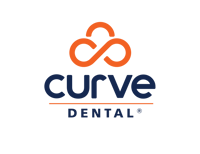Key Performance Indicators Essential for Dental Practices

In today's competitive healthcare environment, dental practices must constantly evaluate and improve their operational efficiencies. One effective tool for achieving this is through monitoring Key Performance Indicators (KPIs). By focusing on key metrics, dental offices can optimize their performance, enhance patient satisfaction, and ultimately increase profitability. This blog post will highlight the most crucial KPIs that dental practices should track.
1. Patient Acquisition Cost (PAC)
Understanding how much it costs to acquire a new patient is crucial for budgeting and marketing strategy. Calculate your PAC by dividing the total marketing expenses by the number of new patients acquired in a given period. With this KPI, dental practices can evaluate the efficiency of their marketing efforts and refine strategies to get better returns on investment.
2. Patient Retention Rate
Acquiring new patients is important, but retaining them is even more valuable. Patient Retention Rate can be calculated by dividing the number of returning patients by the total number of patients. A higher retention rate suggests greater patient satisfaction, loyalty, and potential referrals, which are key to long-term success.
3. Production Per Visit
Production per visit gives insight into the efficiency and profitability of each patient visit. This KPI can be calculated by dividing the total production by the total number of patient visits. Improving this metric involves enhancing the value of services provided during each appointment and effectively scheduling treatments.
4. Accounts Receivable Turnover
This KPI measures how efficiently a dental practice collects payments from patients and insurance companies. It is calculated by dividing net credit sales by average accounts receivable. A higher ratio indicates effective debt collection processes, crucial for maintaining cash flow.
5. Cancellation and No-Show Rate
Frequent cancellations and no-shows can significantly affect revenue and resource allocation. This KPI is measured by dividing the number of cancellations and no-shows by the total number of scheduled appointments. Strategies to reduce this rate include appointment reminders, cancellation policies, and flexible scheduling.
6. Average Revenue Per Patient
Tracking the average revenue per patient helps in evaluating the effectiveness of service offerings. It is calculated by dividing total revenue by the number of unique patients. A higher value suggests that upselling services such as cosmetic procedures or additional preventive care is successful.
7. Staff Productivity
Each member of the practice contributes to its overall performance. Staff productivity can be measured by evaluating the revenue generated per team member or by dividing total patient visits by the number of staff. Efficient staff utilization ensures the practice runs smoothly and improves patient satisfaction.
8. Treatment Plan Acceptance Rate
This KPI measures the percentage of recommended treatments that patients accept. It is calculated by dividing the number of accepted treatment plans by the number of recommended plans. A high acceptance rate indicates effective patient communication and trust in the dental practice's recommendations.
9. Net Promoter Score (NPS)
The Net Promoter Score gauges patient satisfaction and their likelihood of referring others. After a visit, patients are asked how likely they are to recommend the practice on a scale from 1 to 10. A higher score reflects a more robust reputation and potential for growth through referrals.
Conclusion
Tracking the right Key Performance Indicators is more than a best practice—it’s a strategic imperative for dental practices that want to thrive in today’s competitive landscape. From reducing no-shows to increasing treatment acceptance and maximizing staff productivity, these metrics offer a clear lens into your practice’s performance and growth potential.
But KPIs alone won’t drive success. The right tools make all the difference.
That’s where Curve Dental® comes in. Our cloud-based practice management software makes it easier to track and act on these essential metrics—while streamlining everything from scheduling and billing to patient communication and reporting. With Curve, you get more than software; you get a smarter way to manage your practice, improve patient satisfaction, and grow with confidence.
Frequently Asked Questions (FAQ)
1. What are dental office KPIs?
Key Performance Indicators (KPIs) for dental offices are specific, measurable metrics used to evaluate the effectiveness and efficiency of different aspects of the practice. These indicators help dental professionals track performance, identify areas for improvement, and make informed decisions to enhance overall operations.
2. Why are KPIs important for dental practices?
KPIs are crucial because they provide tangible data that can guide decision-making and strategic planning. By continuously monitoring these metrics, dental offices can improve patient care, increase profitability, streamline operations, and adapt to market changes effectively.
3. How often should a dental practice review its KPIs?
Dental practices should review their KPIs regularly, ideally on a monthly basis. This frequency allows for timely detection of trends or issues, facilitating prompt corrective actions. Depending on the practice’s goals and resources, some KPIs might also be reviewed weekly or quarterly.
4. Can technology assist in tracking dental KPIs?
Yes, technology plays a vital role in tracking dental KPIs. Many practice management software solutions, like Curve Dental, offer modules to automatically collect and analyze data related to various KPIs. This automation ensures accuracy, saves time, and allows practitioners to focus more on patient care.
5. What actions can be taken if KPIs indicate underperformance?
If KPIs indicate underperformance, a dental practice should first conduct a thorough analysis to identify underlying causes. Common corrective actions might include staff training, process adjustments, patient feedback initiatives, or investment in new technologies. It’s essential to tailor interventions to the specific issues identified by the KPIs.
6. Is it necessary for all dental practices to monitor the same KPIs?
Not necessarily. While some KPIs are universally applicable (like patient retention rate or average revenue per patient), other metrics might be more relevant to specific practices, depending on their size, services offered, and patient demographics. It's important for each practice to identify and focus on the KPIs that align with its unique goals and circumstances.
*This content was partially generated by artificial intelligence. It may contain errors or inaccuracies, and should not be relied upon as a substitute for professional advice.

Curve Dental
Welcome to the official blog of Curve Dental. Serving up content about the team behind Curve Dental
